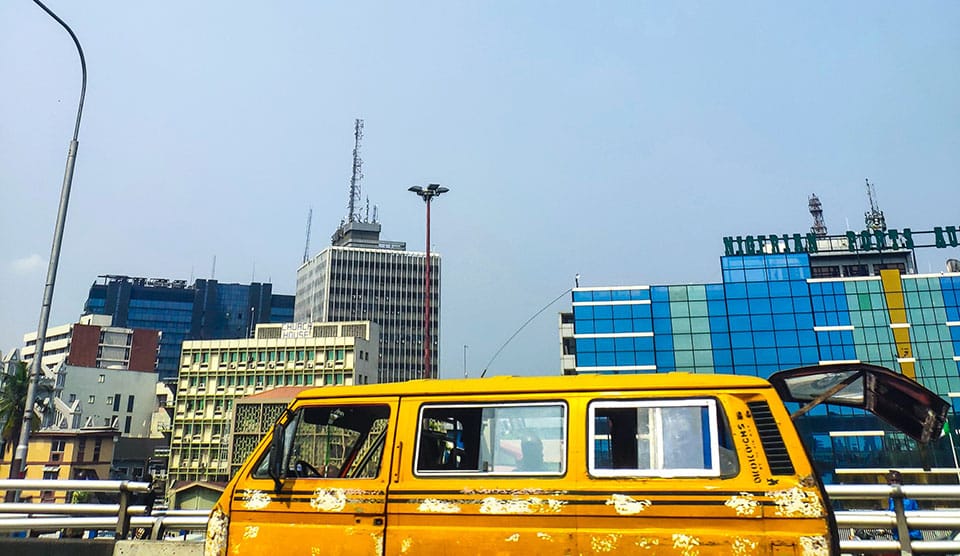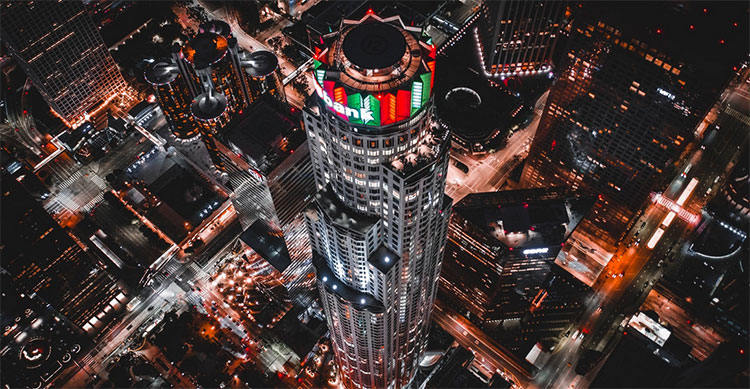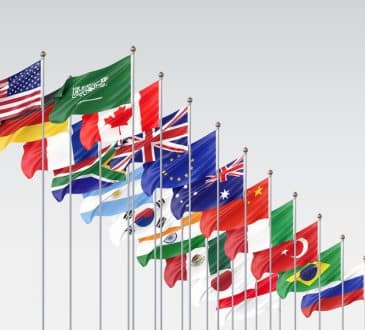The World’s Largest Megacities By Population, 2020

Almost half the population on earth live in urban areas, in megacities with a large number of residents, a lot of cars and traffic. There are 34 cities that meet the definition of a megacity (an urban area must have a population of 10 million people) spread throughout the globe. This number is going to increase as time passes by.
The report finds that megacities create wealth, generate employment, and drive human progress. On the downside, big cities are also responsible for driving climate change, inequality, as well as the breakdown of traditional family structures. A countdown of the 34 largest urban areas on the planet.
So, which are the largest cities around the world in 2020?
Tokyo comes first in the rankings for 2020 with 37.5 million residents. But in the upcoming years, Tokyo might lose first place. Young residents are having fewer children, leading the population to a decline. It is estimated that the population will be reduced to 7.13 million by 2100. Nearly 4 million of the above will be over the age of 65. Delhi comes second in the list that includes the megacities for 2020. Delhi’s population for 2020 is 28.5 million.
Shanghai comes third in the list that includes the megacities for 2020. The city has the largest population compared to the rest regions in China. Shanghai’s population for 2020 is 25.6 million. Specific constructions helped most residents to have access to water, electricity, and waste collection. But the population density is really high causing environmental problems such as a high level of air pollution.
At the 4th place of the list comes Sao Paolo in Brazil with 21.7 million population. A lot of residents have moved to the suburbs and commute to the city center for their work. So, the urban center has a high level of pollution and many other problems caused by overpopulation.
Mexico City is at number five of the list. The city’s population is 21.6 million. The number of residents reached a really high level between 1940 and 1995. This increase in population as a consequence of the growth of industries in the city center, which offered better access to electricity, water, and gas. Though the city has adequate water capacity, it lacks an efficient distribution system. As a result, those living in the suburbs are often forced to use untreated wastewater.
The next one on the list is Cairo. The city’s population for 2020 is 20.1 million. But most people in Cairo live in poverty. Almost 10 million people lived in Cairo’s slums in 2016. However, despite this fact, Cairo’s population continues to grow rapidly. Mumbai in India is at number 7 of the list. The city’s population is 20.0 million.
Beijing, China’s capital has a population growth rate of about 2% annually. Beijing’s population is 19.6 million. This number gives the city the 8th place on the list with the largest cities in the world for 2020. The next one on the list is Dhaka in Bangladesh. The city’s population for 2020 is 19.3 million. Osaka in Japan is at number ten of the list. The city’s population is 21.6 million.
The World’s Largest Megacities By Population, 2020
| Rank | Mega City | Country | Population |
|---|---|---|---|
| 1 | Tokyo | Japan | 37.5 million |
| 2 | Delhi | India | 28.5 million |
| 3 | Shanghai | China | 25.6 million |
| 4 | Sao Paolo | Brazil | 21.7 million |
| 5 | Mexico City | Mexico | 21.6 million |
| 6 | Cairo | Egypt | 20.1 million |
| 7 | Mumbai | India | 20.0 million |
| 8 | Beijing | China | 19.6 million |
| 9 | Dhaka | Bangladesh | 19.5 million |
| 10 | Osaka | Japan | 19.3 million |
| 11 | New York-Newark | United States | 18.8 million |
| 12 | Karachi | Pakistan | 15.4 million |
| 13 | Buenos Aires | Argentina | 15.0 million |
| 14 | Chongqing | China | 14.8 million |
| 15 | Istanbul | Turkey | 14.7 million |
| 16 | Kolkata | India | 14.6 million |
| 17 | Manila | Philippines | 13.5 million |
| 18 | Lagos | Nigeria | 13.4 million |
| 19 | Rio de Janeiro | Brazil | 13.3 million |
| 20 | Tianjin | China | 13.2 million |
| 21 | Kinshasa | DR Congo | 13.1 million |
| 22 | Guangzhou | China | 12.6 million |
| 23 | Los Angeles | United States | 12.5 million |
| 24 | Moscow | Russia | 12.4 million |
| 25 | Shenzhen | China | 11.9 million |
| 26 | Lahore | Pakistan | 11.7 million |
| 27 | Bangalore | India | 11.4 millio |
| 28 | Paris | France | 11.1 million |
| 29 | Bogota | Colombia | 10.8 million |
| 30 | Jakarta | Indonesia | 10.6 million |
| 31 | Chennai | India | 10.5 million |
| 32 | Lima | Peru | 10.4 million |
| 33 | Bangkok | Thailand | 10.2 million |
| 34 | London | UK | 10 million |
Lagos in Nigeria is at number 18 of the list. The city’s population is 13.4 million. There is also a very high level of poverty in Lagos as two out of three residents live in slums without clean water and electricity. Lagos’s population only continues to grow due to high birthrates. It is estimated that in the next years the population will grow rapidly.
At the 23rd place of the list comes Los Angeles with 12.5 million residents total population. The City of Angels started out as a town of just 4,000 people and gradually became a city that for many is characterized as a paradise.
At the 28th place of the list comes Paris with 11.1 million population. In the 1850s the city was transformed. Roads were widened, trees were planted and the sewage system was improved. So Parisian farmers came up to feed the booming population. New urban farms yielded 110 pounds of produce per resident annually.
At 34th place of the list comes London with 10 million people population. In 1815 London was the largest city in the world. Nowadays, it still has a place among the largest cities on the list globally. An influx of newcomers and young families is estimated to push the population over 11 million by 2050. What’s more, the number of cities with populations of more than 10 million people will rise to 41 by 2030.
World’s Best Countries For Education System.
World’s Best Countries For A Child To Be Born In.
World’s Best Countries For Its Citizens To Live.
World’s Best Countries For Cultural Influence.
Bring the best of the CEOWORLD magazine's global journalism to audiences in the United States and around the world. - Add CEOWORLD magazine to your Google News feed.
Follow CEOWORLD magazine headlines on: Google News, LinkedIn, Twitter, and Facebook.
Copyright 2025 The CEOWORLD magazine. All rights reserved. This material (and any extract from it) must not be copied, redistributed or placed on any website, without CEOWORLD magazine' prior written consent. For media queries, please contact: info@ceoworld.biz












